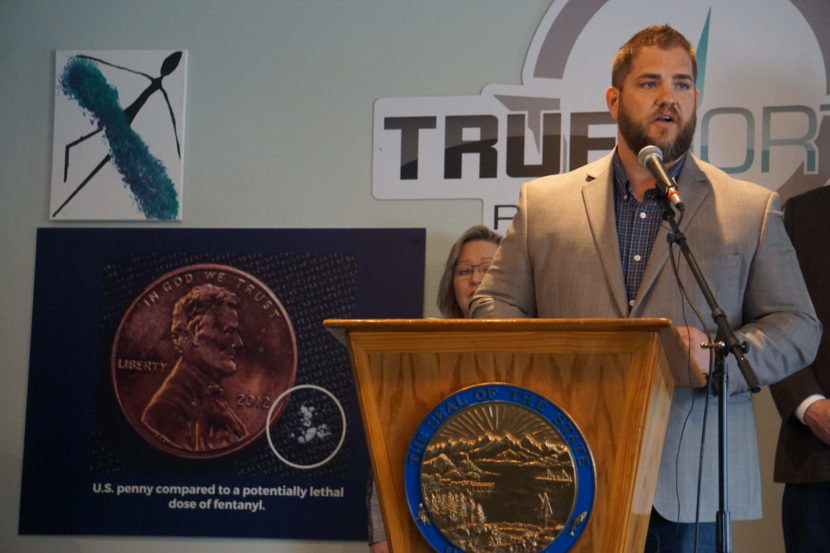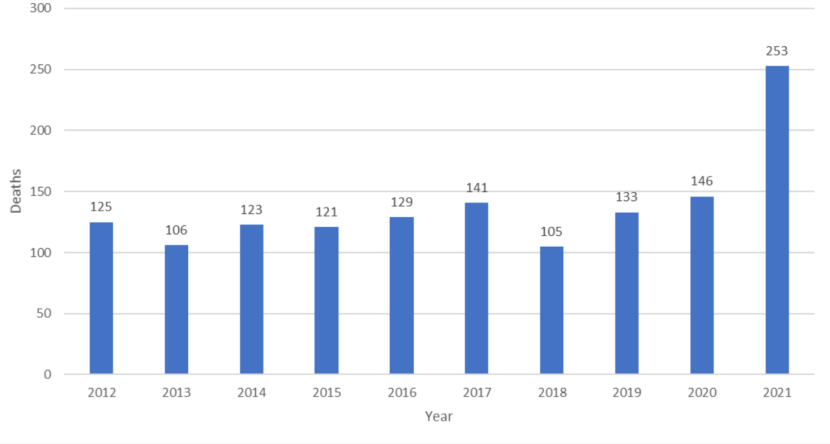
In Alaska, the state with the nation’s biggest increase in drug overdose deaths from 2020 to 2021, certain demographic groups have been at higher risk, according to a newly released report: men more than women, Alaska Native people more than other ethnic groups and Anchorage and Gulf Coast residents more than those in other parts of the state.
The report, issued Thursday by the Alaska Department of Health’s public health division, also highlighted the risks of certain types of drugs and drug combinations.
In all, Alaska’s overdose fatalities spiked by 74% in that one-year period, rising from 146 in 2020 to 253 in 2021, the report said. That increase was largely driven by ingestion of fentanyl, a synthetic opioid, and methamphetamine, a psychostimulant, it said. The rate of deaths for overdoses involving fentanyl increased by 150% in that single year, and the death rate for overdoses involving methamphetamine increased by 148%, the report said.
Drug mixtures were involved in most of the overdose deaths since 2017. In those years, 58% of the deaths were in cases where victims combined drugs from more than one narcotic, sedative or psychotropic category, the report said. About a third of the fatalities during that period were of people who had mixtures from at least three categories of drugs.
That record shows a need for more education about the risks of combining substances, the report said.
In particular, fentanyl was involved in nearly three-quarter of the opioid deaths, many of which also involved mixtures with methamphetamine or heroin, it said. “The high potency of fentanyl combined with the tendency for mixing or co-use with other substances complicates intervention and treatment efforts,” it said.
Among demographic groups, the overdose rate for males was 42.9 per 100,000, compared to 26.9 per 100,000 for females, the report said.

For Alaska Native and American Indian people, the 2021 overdose rate was 77.7 per 100,000 people, compared to a 2021 rate of 28.8 for white Alaskans. For both Indigenous and white Alaskans, overdose death rates increased substantially from 2020 to 2021. For Black Alaskans, the death rates rose slightly from 2020 to 2021. For Asian/Pacific Islanders and Hispanics, the total overdose death numbers were too small to discern a trend.
Within Anchorage, the 2021 overdose death rate was 49.3 per 100,000 people, compared to the statewide rate of 35.2. The Gulf Coast had Alaska’s second-highest regional rate for 2021 overdose deaths at 40.3 per 100,000 people. The Gulf Coast includes the Kenai Peninsula and Kodiak Island boroughs and the Chugach and Copper River census areas.
The age groups with the highest rates for overdose deaths are young adults 25 to 34 years old and middle-aged adults 45 to 54 years old, according to the report.
The statistics can be used to help guide prevention and response programs, the report said. “Engaging with people at high risk of overdose is key to preventing more deaths,” it said.
The statistics in the report are preliminary. The 2021 number may not be complete and could change, the report said.



